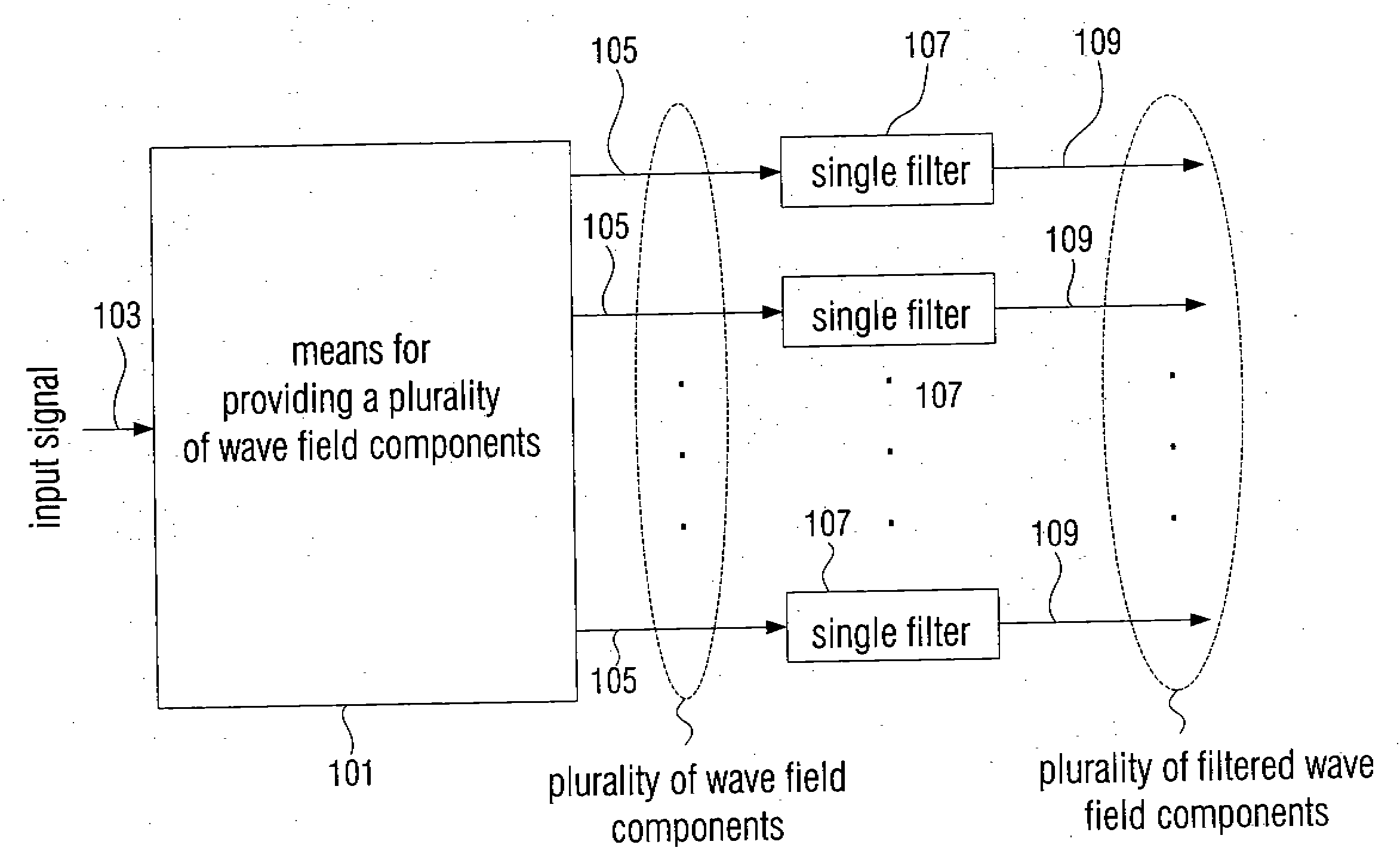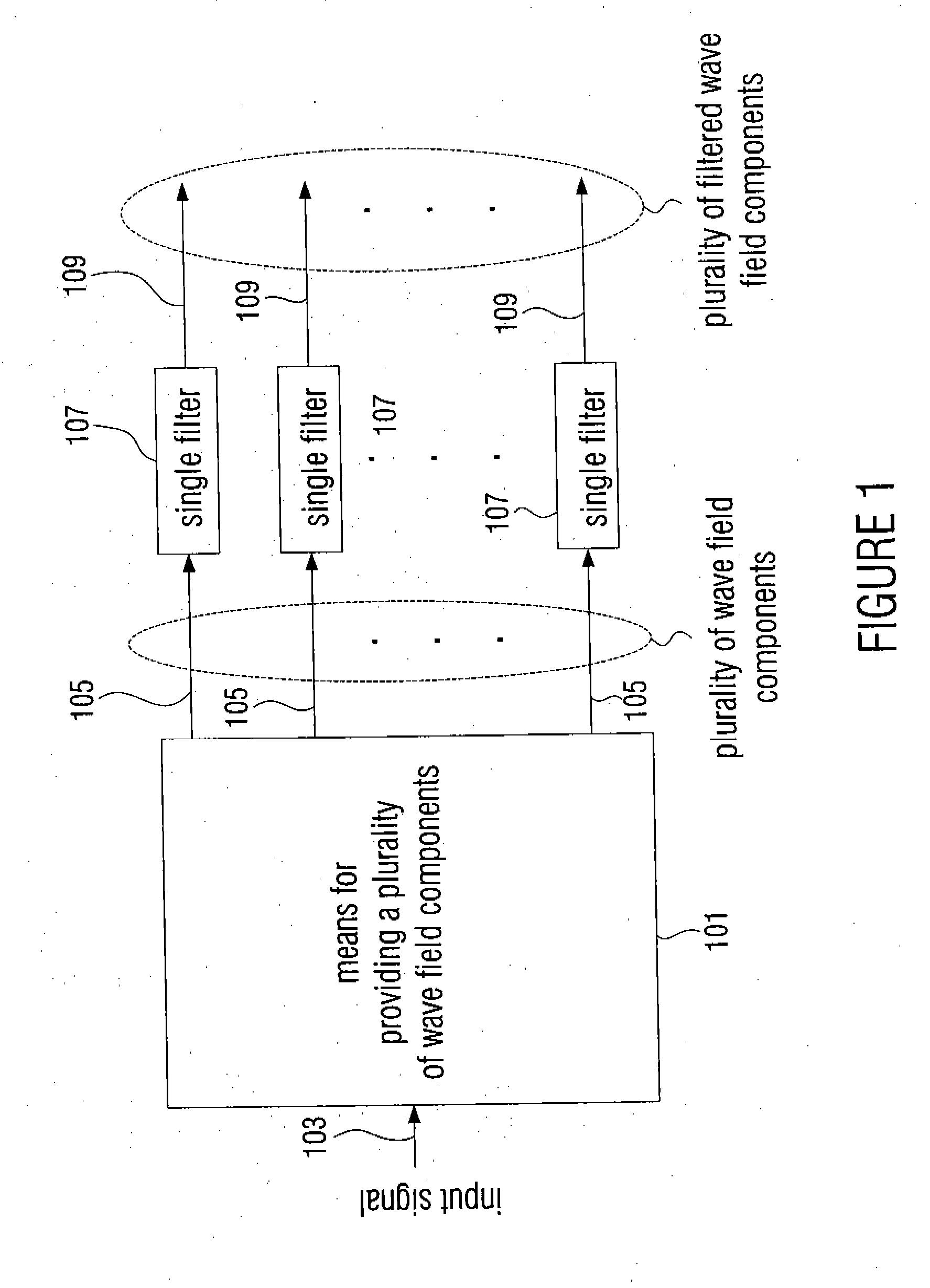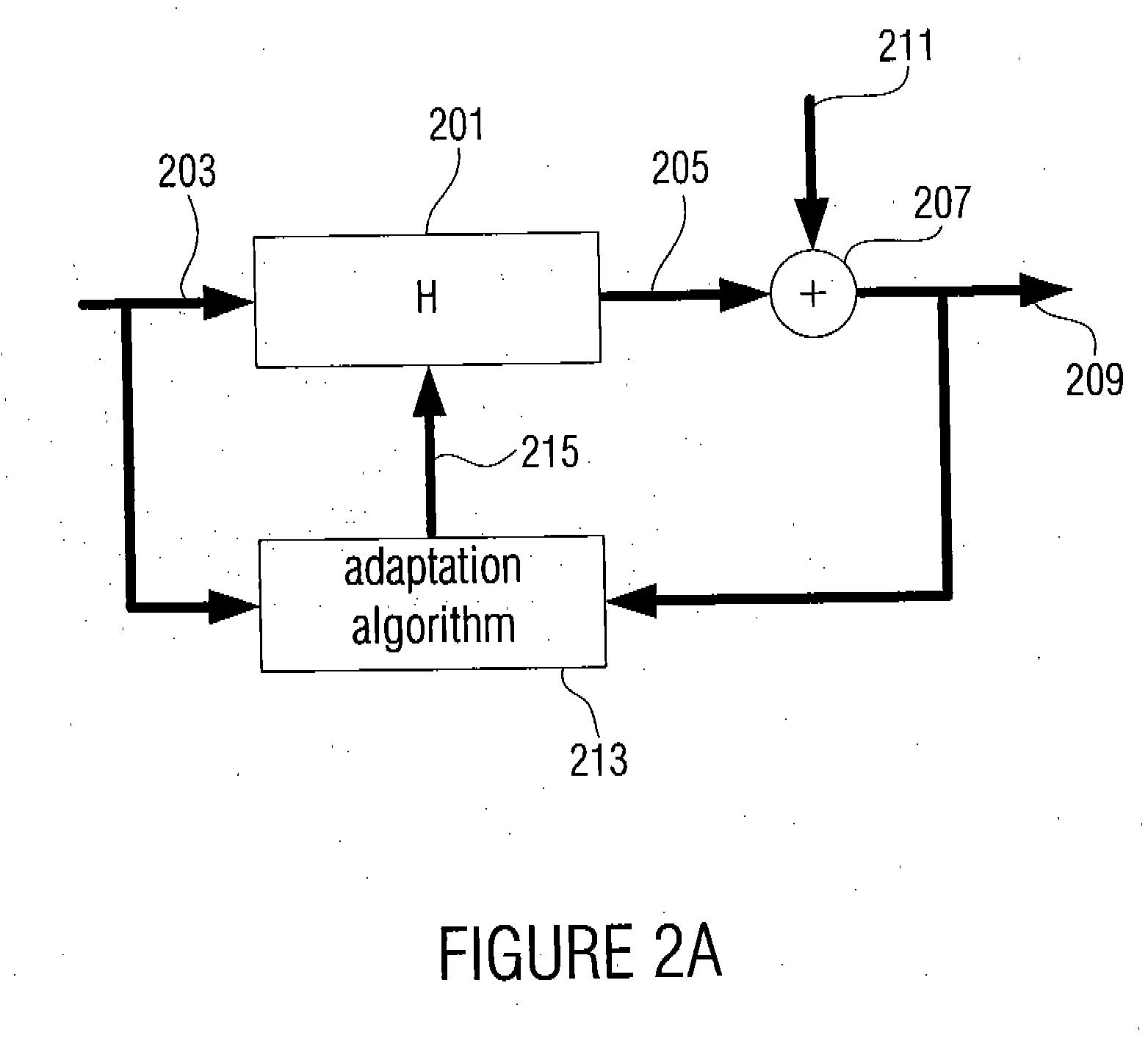[0054] It is another
advantage of the present invention that the inventive concept, for example with multidimensional filtering, has a reduced hardware or computing effort compared to the known concepts according to the prior art. The effort reduction is caused by the fact that during filtering or further
processing of the wave-field components, their number does not generally depend on the number of positioned sensors or actors, but is merely limited by the spatial sampling theorem, since the number of wave-field components is a mathematical quantity, whose further processing is implemented, for example, in a processor in appropriate way. The further
advantage is the obtained orthogonality of the wave-field components. The inventive concept allows also an improvement of the convergence properties during adaptive filtering of the wave-field components, since the same are orthogonal to each other, as has already been mentioned.
[0055] It is another
advantage of the present invention that the effort in maintaining a desired parameter convergence can be minimized when the concept of multichannel adaptive filtering is extended to the multidimensional case, since the wave-field components can be considered like signals.
[0056] As has already been mentioned, according to the invention, adaptive filters are considered, which are explicitly based on partial differential equations. Thereby, the inventive filters are not only optimized at individual room positions, but according to the spatial sampling theorem continuously across the whole area of the room. The sampling theorem is known from the following paper, D. H. Johnson and D. E. Dudgeon, Array
Signal Processing: Concepts and Techniques, Prentice Hall, Upper
Saddle River, N.J., USA, 1993.
[0057] As has already been mentioned, the number of required actors and sensors is reduced according to the invention, since measurements and influences have to be made only at the edge, instead of the whole room volume. In many applications, it would not be practical, to place sensors or actors in the whole volume of the room. This is, for example, the case when a room is for example, to be measured during an opera performance. By reducing the number of sensors and actors, a convergence improvement of
adaptation is obtained, since a redundancy within the field is taken out. This results from the already mentioned fact that the number of wave-field components can be determined by the sampling theorem and not by the number of receive means or transmit means.
[0058] By combining the adaptive
MIMO filtering with an appropriate multidimensional transformation, a further reduction of the complexity and an improvement of the convergence can be obtained, as has been shown with regard to the above example. Transformations causing an
orthogonalization of the spatial and temporal components are particularly advantageous. Particularly, a
decomposition according to the orthogonal
base function of the field problem can be used. Such decompositions are, for example, described in the papers K. Burg, H. Haf and F. Wille, Höhere Mathematik für Ingenieure—Band V: Funktionalanalysis und Partielle Differentialgleichungen, Teubner Verlag, Stuttgart, 1993 and A. Sommerfeld, Vorlesungen Uber theoretische Physik—Band VI: Partielle Differentialgleichungen der Physik, Verlag Harri Deutsch, Frankfurt, 1978. Parts of these, are, for example, the wave components of a coordinate
system adapted to the respective application. In dependence on the geometry of the sensor and actor arrangement, for example, plane waves, spherical waves or cylindrical waves can be used, i.e. the orthogonal wave field functions comprise Hankel, Bessel, cylinder or spherical functions, as described in the papers E. Williams, Fourier Acoustic, Academic Press, London, UK, 1999 and A. Berkhout, Applied
Seismic Wave Theory, Elsevier, Amsterdam, The Netherlands, 1987.
[0059] It is another advantage of the present invention that the already mentioned applications, which are so far only known in the context of adaptive filtering or according to the prior art (for example
system identification, prediction), can now be efficiently extended to the multidimensional adaptive filtering with the help of the new approach, whereby new fields of application open up. For example, arbitrary room properties can be determined at arbitrary locations of the room with the help of the traditional
adaptation techniques, which is, for example, advantageous for a sound
reproduction via wave-field synthesis or for recording via wave-
field analysis.
 Login to View More
Login to View More  Login to View More
Login to View More 


